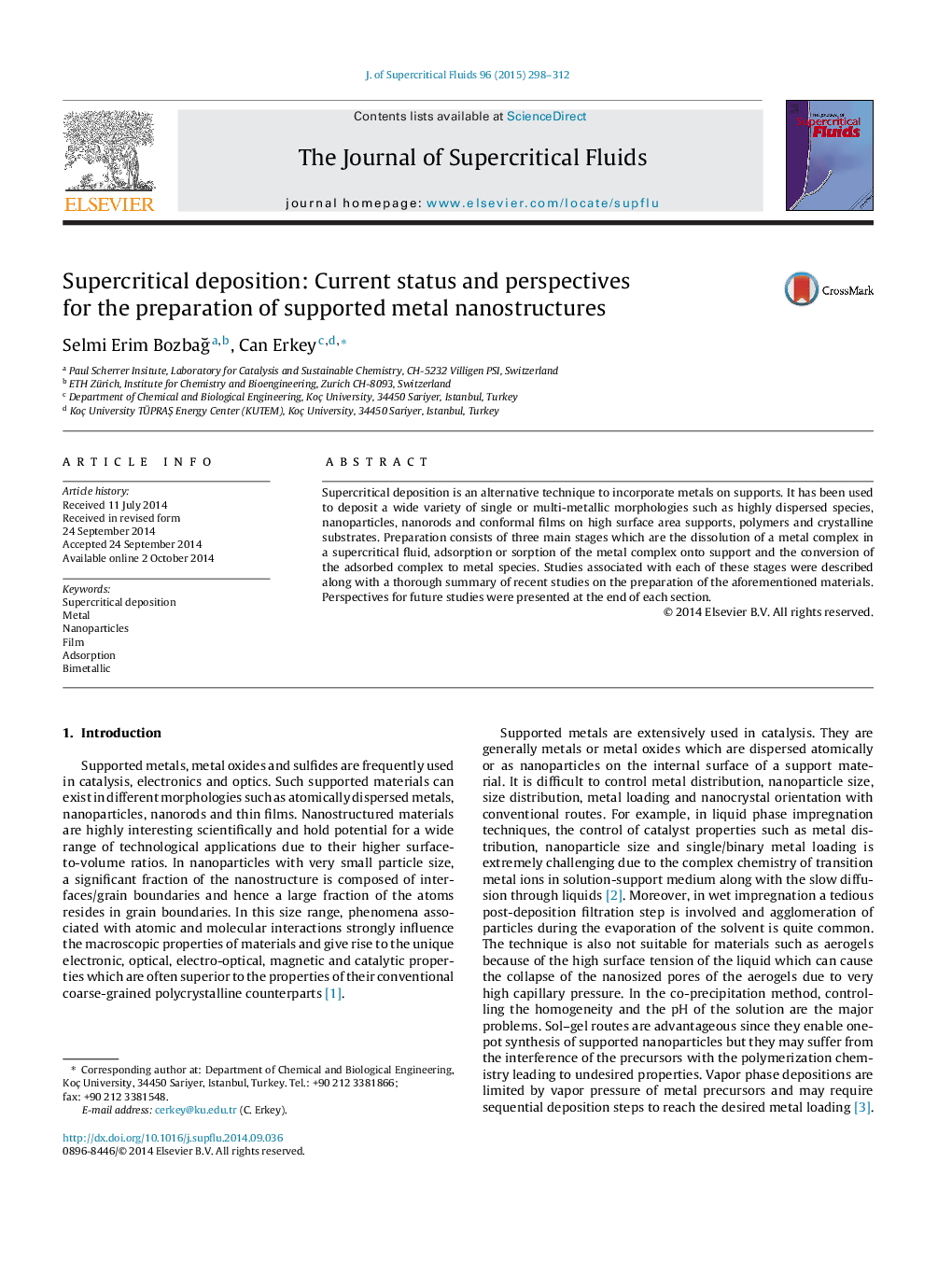| Article ID | Journal | Published Year | Pages | File Type |
|---|---|---|---|---|
| 230464 | The Journal of Supercritical Fluids | 2015 | 15 Pages |
•Supercritical deposition (SCD) process for the preparation of supported nanostructures was reviewed.•Fundamentals associated with the SCD process such as dissolution of metal complexes in supercritical fluids, adsorption on supports and conversion of the adsorbed complexes to metal species were described.•Perspectives for future studies were presented.
Supercritical deposition is an alternative technique to incorporate metals on supports. It has been used to deposit a wide variety of single or multi-metallic morphologies such as highly dispersed species, nanoparticles, nanorods and conformal films on high surface area supports, polymers and crystalline substrates. Preparation consists of three main stages which are the dissolution of a metal complex in a supercritical fluid, adsorption or sorption of the metal complex onto support and the conversion of the adsorbed complex to metal species. Studies associated with each of these stages were described along with a thorough summary of recent studies on the preparation of the aforementioned materials. Perspectives for future studies were presented at the end of each section.
Graphical abstractFigure optionsDownload full-size imageDownload as PowerPoint slide
